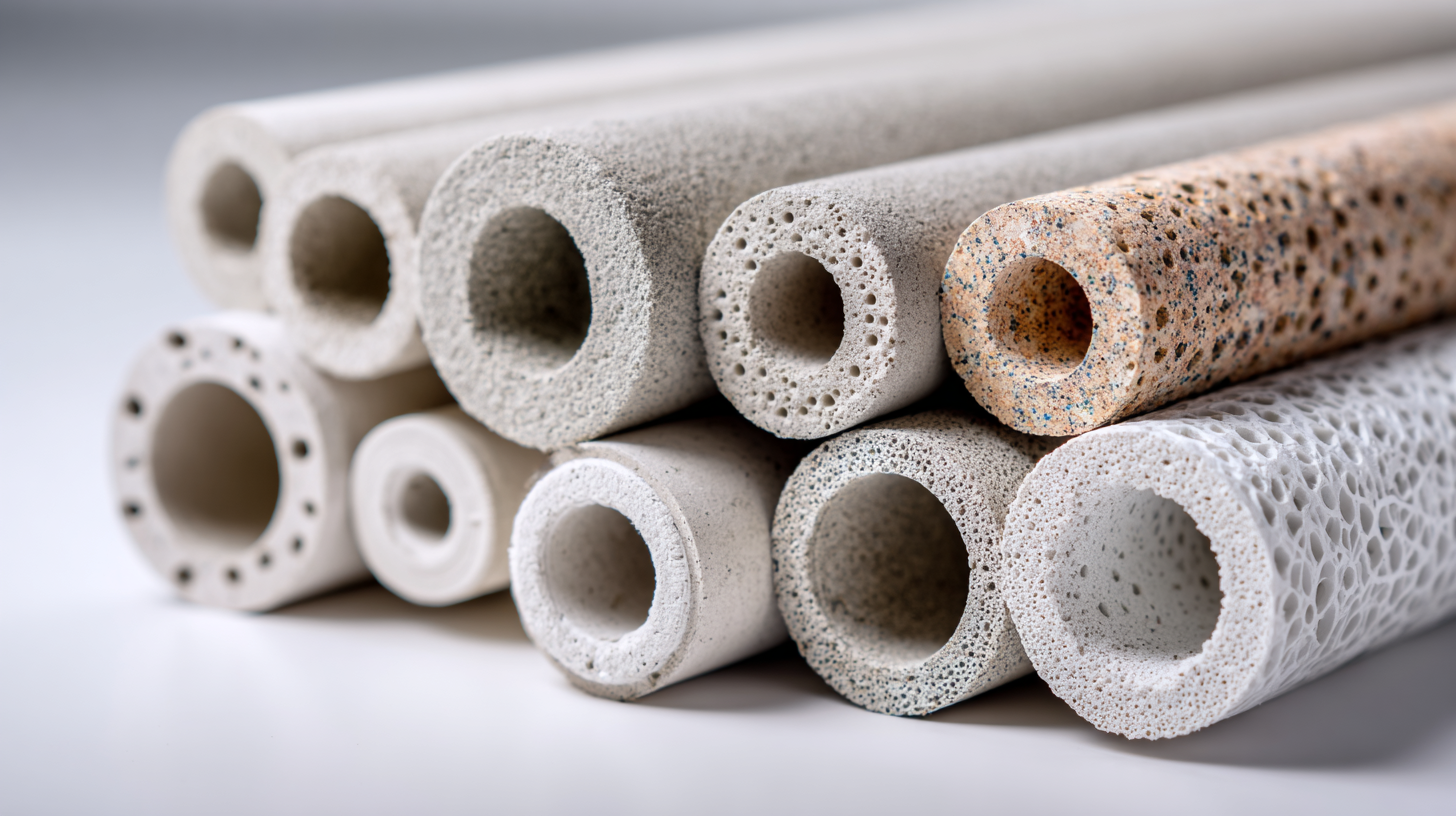Leave Your Message
Request a Quote
Choosing the right filtration media is crucial for achieving optimal performance in various applications, from water treatment to air purification. With a plethora of options available on the market, selecting the most suitable filtration media can be a daunting task. This ultimate guide aims to simplify the decision-making process by providing you with essential tips and insights tailored to your specific needs. We will explore different types of filtration media, their unique properties, and the factors you should consider when making your choice. Whether you're looking for enhanced efficiency, cost-effectiveness, or environmental sustainability, understanding the nuances of filtration media will empower you to make informed decisions that lead to cleaner air and water. Join us as we delve into the world of filtration media and equip yourself with the knowledge to select the best option for your requirements.

When it comes to selecting the right filtration media, understanding the various types available is crucial for achieving optimal results. The most common types include activated carbon, ceramic, sand, and membrane filters. Each of these media serves specific purposes and offers distinct advantages depending on your filtration needs. For instance, activated carbon is highly effective in removing chlorine, volatile organic compounds, and unpleasant odors from water and air. Its porous structure allows it to absorb a wide range of impurities, making it a popular choice for both home and industrial applications.
Ceramic filters, on the other hand, are excellent for removing bacteria and sediment from water. They work by using a porous ceramic material that blocks pathogens while allowing clean water to pass through. Sand filters are often used in larger systems, such as swimming pools, due to their ability to handle large volumes of water and effectively trap particles. Lastly, membrane filtration technology, which includes ultrafiltration and reverse osmosis, is ideal for applications requiring the removal of very fine particles and contaminants at the molecular level. Understanding these different types of filtration media can help you make informed decisions tailored to your specific needs.

When selecting the best filtration media for your needs, it's essential to consider several key factors. Firstly, assess the type of contaminants you need to filter. Different filter types, such as synthetic and natural, provide varying degrees of filtration efficiency. For instance, synthetic filters often excel in applications requiring high durability and particle retention, while natural filters can be more suitable for environmentally conscious projects.

Another crucial aspect is the layer configuration of the filtration media. Single-layer versus multi-layer options can significantly influence filtration performance. Multi-layer media can provide improved filtration efficiency, as they capture a broader range of particle sizes. Think about the specific requirements for your application: Do you need high flow rates or is maximum filtration efficiency necessary? These decisions will guide you in choosing the appropriate layer configuration.
Tips: Always evaluate the filter lifetime and maintenance requirements, as these can impact overall cost-effectiveness. Additionally, consider how the media performs under real-world conditions like dust loading and clogging, as this can affect air quality and energy consumption in applications. Pay attention to industry standards and certifications when selecting your filtration media to ensure compliance and reliability in performance.
The landscape of filtration media is evolving rapidly, driven by innovative technologies that are transforming how we approach water and air purification. Recent reports suggest that the global filtration media market is expected to reach $23 billion by 2025, growing at a CAGR of 5.6% from 2020. This growth is largely fueled by advancements in materials science, particularly the development of nanofibers and membrane technologies that offer enhanced filtration efficiency and lower resistance.
One of the most promising innovations is the integration of smart technology within filtration systems. Smart filtration technologies utilize sensors and IoT connectivity to monitor filter conditions in real time. According to a study by MarketsandMarkets, the smart filtration market is projected to grow from $3.7 billion in 2020 to $9.2 billion by 2025. This highlights a significant shift toward automated systems that optimize performance and reduce waste, making them highly desirable for both industrial and residential applications.
Furthermore, sustainability has become a crucial focus, with new bio-based and recycled filtration media gaining traction. Reports indicate that sustainable materials can reduce the environmental impact by up to 50% compared to traditional materials. The adoption of these innovative solutions not only addresses consumer demand for greener products but also aligns with regulatory trends aimed at minimizing waste in various sectors. As these technologies continue to reshape the filtration industry, selecting the right filtration media will become increasingly critical for achieving both efficiency and sustainability goals.
When selecting filtration media, it's essential to consider not only performance but also the environmental impact and sustainability of the materials involved. Many traditional filtration options utilize non-biodegradable substances that contribute to long-term pollution. For conscious consumers and businesses alike, opting for filtration media made from renewable resources can significantly reduce environmental harm. Materials such as natural fibers, biodegradable plastics, and recycled components are becoming more prevalent, presenting eco-friendly alternatives that meet filtration requirements while promoting sustainability.
Moreover, the production process of filtration media plays a crucial role in its environmental footprint. Manufacturers focusing on sustainable practices, such as using less energy during production and minimizing waste, are setting industry standards. By supporting companies that prioritize eco-conscious manufacturing, consumers can drive demand for greener options. Ultimately, incorporating sustainable practices in filtration selection not only helps protect the environment but also enhances the overall effectiveness of filtration systems, creating a win-win scenario for ecology and efficiency.
This bar chart illustrates the environmental impact ratings of various filtration media based on key sustainability factors, such as carbon footprint, recyclability, and resource consumption. The data helps in understanding which filtration media options are more sustainable.
When it comes to maintaining and improving filtration media performance, a few expert tips can make a significant difference. First and foremost, regular monitoring is essential. Keeping an eye on the pressure differential across the filter can indicate when it needs to be cleaned or replaced. Ideally, set up a routine inspection schedule to catch potential issues before they escalate.
Another key tip is to ensure optimal pre-treatment of the fluid being filtered. This includes removing larger particles that could clog the filtration media prematurely. Utilizing coalescers or sedimentation tanks can enhance overall efficiency, allowing the primary filter to operate more effectively and prolonging its lifespan.
In addition, consider upgrading to advanced filtration media designed for specific applications. Technologies such as activated carbon, ceramic filters, or polymer membranes can provide superior performance compared to traditional options. Always match the filtration media to your specific needs to achieve the best results.

